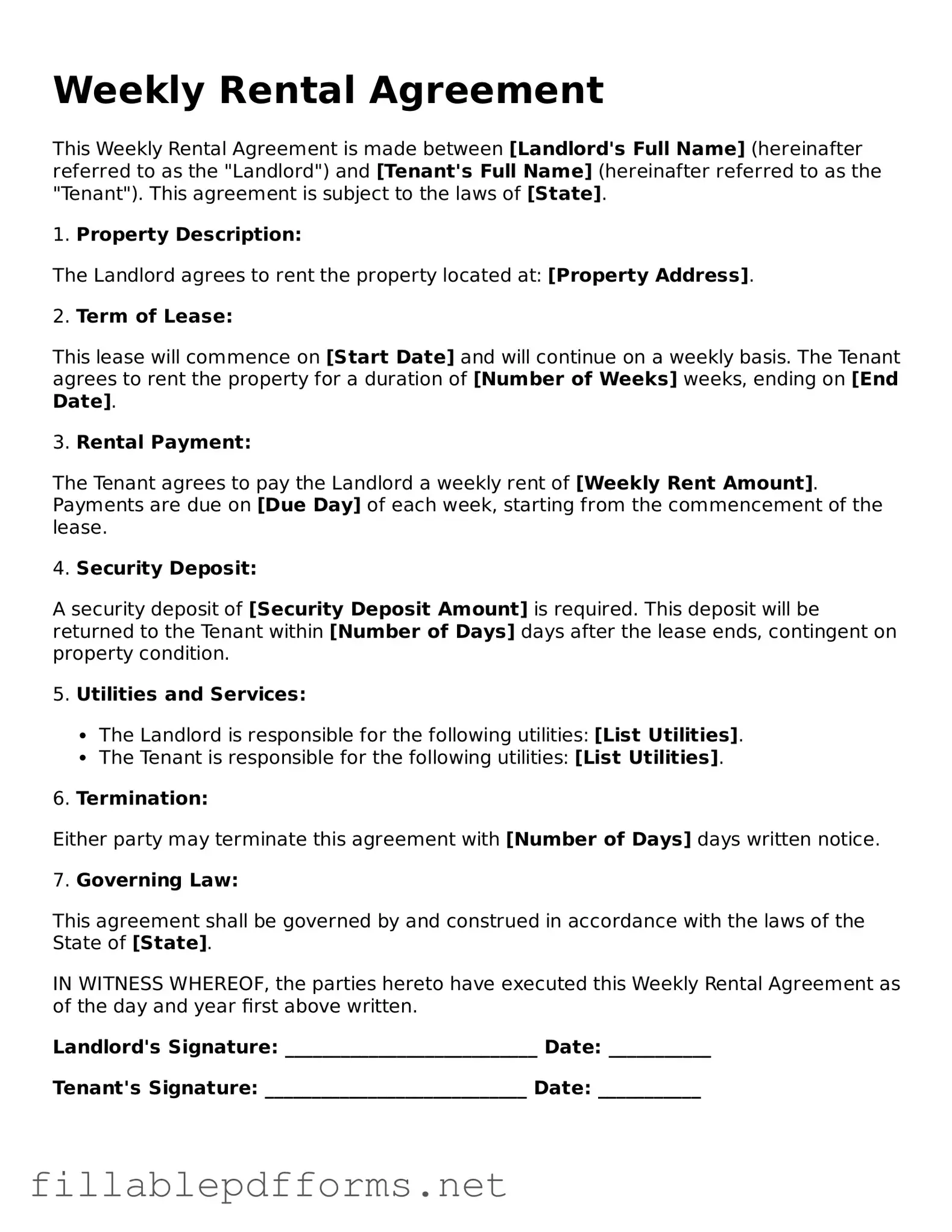When engaging in short-term rental arrangements, understanding the Weekly Rental Agreement form is essential for both landlords and tenants. This document serves as a vital tool that outlines the specific terms and conditions governing the rental of a property on a weekly basis. Key components of the agreement typically include the rental amount, payment schedule, and duration of the lease, ensuring that both parties have clear expectations. Additionally, the form often addresses responsibilities regarding property maintenance, security deposits, and rules for tenant behavior, which help to foster a respectful living environment. By clearly delineating these aspects, the Weekly Rental Agreement not only protects the rights of both landlords and tenants but also promotes a smooth rental experience. As short-term rentals become increasingly popular, familiarity with this form can empower individuals to navigate their rental relationships with confidence and clarity.
